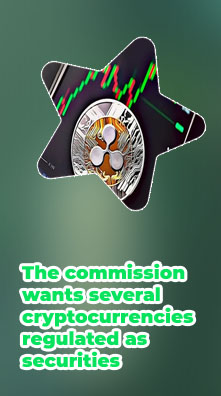When it comes to understanding XRP crypto, staying informed is key. In order to help you navigate the world of XRP, we have compiled a list of four articles that cover various aspects of this digital asset. From its history and technology to its potential for the future, these articles will provide valuable insights into XRP and how it fits into the larger cryptocurrency landscape.
The Rise of XRP: A Brief History of Ripple's Digital Asset

Ripple's XRP has emerged as a dominant player in the world of digital assets, and its rise is chronicled in a comprehensive and insightful manner in the book under review. The author provides a detailed account of the history of XRP, highlighting key milestones and developments that have shaped its trajectory in the cryptocurrency market.
One practical use case of XRP that exemplifies its potential for positive outcomes is its role in facilitating cross-border payments. With its fast transaction speeds and low fees, XRP has enabled individuals and businesses to transfer value across borders quickly and efficiently. For instance, a company based in the United States was able to send a payment to a supplier in Japan using XRP, saving both parties time and money in the process. The seamless experience and cost savings associated with using XRP for cross-border payments have garnered praise from users, further solidifying its position as a valuable digital asset.
Overall, "The Rise of XRP" offers a comprehensive overview of Ripple's digital asset and its journey to prominence in the cryptocurrency ecosystem. The book is a valuable resource for anyone looking to gain a deeper understanding of XRP and its potential applications in the world of finance.
Exploring the Technology Behind XRP: How Ripple's Protocol Sets It Apart
Ripple, a popular cryptocurrency, has been gaining attention in the world of finance due to its innovative technology and unique protocol. One of the key features that sets Ripple apart from other cryptocurrencies is its use of the XRP ledger. This ledger is a decentralized digital asset that allows for fast and inexpensive transactions, making it an attractive option for financial institutions and individual users alike.
One of the main advantages of Ripple's XRP protocol is its scalability. Unlike other cryptocurrencies like Bitcoin, which can be slow and expensive to use, XRP transactions are processed quickly and efficiently. This makes it a viable option for businesses looking to streamline their payment processes and reduce costs.
Another key feature of Ripple's technology is its security. The XRP ledger uses advanced encryption techniques to ensure that transactions are secure and tamper-proof. This gives users peace of mind knowing that their funds are safe and protected from potential threats.
Additionally, Ripple's XRP protocol is designed to be interoperable with other financial systems, making it easy for businesses to integrate Ripple into their existing infrastructure. This flexibility allows for seamless integration and compatibility with a wide range of platforms and applications.
Overall, Ripple's XRP protocol offers a unique and innovative solution for fast, secure, and cost-effective transactions. With its scalability, security,
XRP vs. Bitcoin: A Comparison of Two Leading Cryptocurrencies
When looking at the world of cryptocurrencies, two names stand out as leaders in the field: XRP and Bitcoin. While both are popular choices for investors and enthusiasts alike, they have distinct differences that set them apart.
Bitcoin, known as the original cryptocurrency, was created in 2009 by an unknown person or group of people under the pseudonym Satoshi Nakamoto. It operates on a decentralized peer-to-peer network, allowing for secure and anonymous transactions. Bitcoin is often seen as a store of value and a hedge against inflation, making it a popular choice for long-term investment.
On the other hand, XRP, created by Ripple Labs in 2012, is designed for fast and low-cost international money transfers. It aims to bridge the gap between traditional financial systems and blockchain technology, making it a favorite among banks and financial institutions. XRP transactions are processed quickly, with minimal fees, making it an attractive option for those looking to send money across borders.
While Bitcoin and XRP both have their strengths and weaknesses, the choice between the two ultimately comes down to individual preferences and investment goals. Bitcoin is ideal for those looking to store value and hedge against inflation, while XRP is better suited for those needing to make fast and affordable international transfers.
The Future of XRP: What Lies Ahead for Ripple's Digital Asset
As Ripple's XRP continues to make waves in the world of digital assets, many are left wondering what the future holds for this popular cryptocurrency. With its fast transactions and low fees, XRP has gained a strong following among investors and financial institutions alike.
One of the key factors that will shape the future of XRP is regulatory clarity. As governments around the world continue to grapple with how to regulate cryptocurrencies, clarity on the status of XRP will be crucial for its continued growth and adoption. Ripple has been working closely with regulators to ensure that XRP remains compliant with existing laws and regulations, which will be essential for its long-term success.
Another important factor to consider is the role that XRP will play in the growing world of decentralized finance (DeFi). With the rise of DeFi platforms and applications, there is a growing need for fast and efficient cross-border payments, which XRP is well-positioned to provide. As more DeFi projects start to integrate XRP into their platforms, we can expect to see even greater demand for this digital asset.
Overall, the future of XRP looks promising, with its strong technology and growing use cases. As the cryptocurrency market continues to evolve, XRP is well-positioned to remain a key player in the digital asset